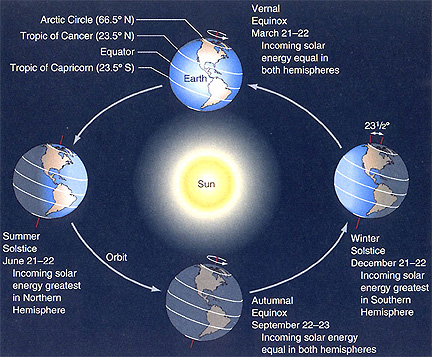Friday, Dec. 21 marks the winter solstice — an astronomical phenomenon when the sun is at its southernmost position in the sky. It will also be the shortest day and longest night of the year in the northern hemisphere.

Calgary will see seven hours, 53 minutes and 22 seconds of daylight time, meaning that the hours of darkness will be just over twice as long as the daylight hours.
At the moment of the solstice — 3:23 p.m. MT — the sun will be directly over the tropic of Capricorn at approximately 23.26 degrees south of the equator.
In Calgary, the sun will be only 15.64 degrees above the southern horizon at solar noon, which is at 12:38 p.m.

Astronomical vs. meteorological winter

Get breaking National news
The day of the solstice is considered to be the first day of astronomical winter, while meteorological winter is considered to be the three coldest months of the year, which are December, January and February in the northern hemisphere.
A more precise definition of meteorological winter — also based on temperature — considers the first day of winter to be the day when the mean temperature — the daily high minus the daily low — is zero. This usually occurs around Nov. 5 in Calgary.
After the brief moment of the solstice, the sun will slowly begin moving a little more to the north each day and daylight hours will gradually get longer in the northern hemisphere. It is a slow process at first with Dec. 22 getting mere seconds more daylight than the 21st.
Most people assume that the sun will start rising earlier and setting later on the first day after the winter solstice but it will actually begin setting later on Dec. 17 and won’t start rising earlier until Jan. 3. This is because the earth’s axis of rotation is tilted 23.26 degrees relative to its plane of orbit around the sun and because the orbit is elliptical and not circular. These factors determine the path the sun traces across the sky, as well as where it appears on the horizon at both sunrise and sunset — a phenomenon known as analemma.
One would expect that after the winter solstice we should see a corresponding rise in the average temperature but, with the northern hemisphere tilted away from the sun in winter, the solar energy we receive is very weak. This, combined with short daylight hours and the fact that everything has been frozen for months, means that we lose more heat than we receive from the sun each day. In other words, we run an energy deficit during winter and January is, on average, the coldest month of the year in the northern hemisphere.
So if you miss the longer, warmer days of summer, take heart in knowing that after the winter solstice, the days gradually get longer and after January, they also — on average — get warmer.
Want your weather on the go? Download Global News’ Skytracker weather app for IOS and Android.



Comments